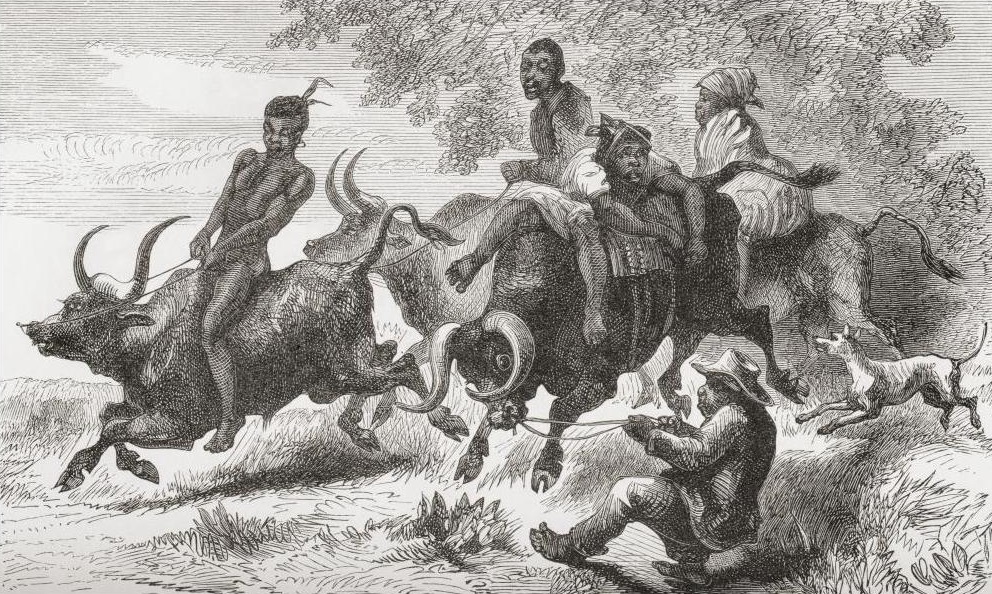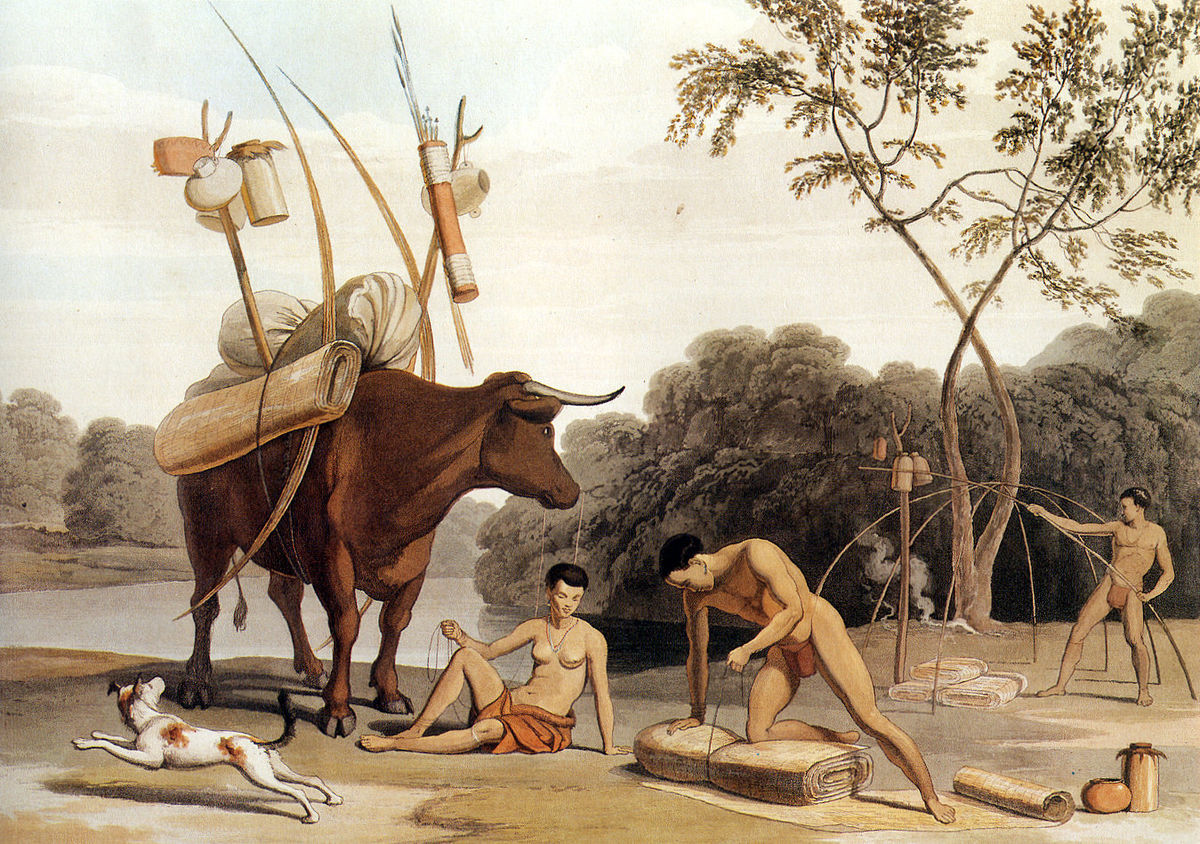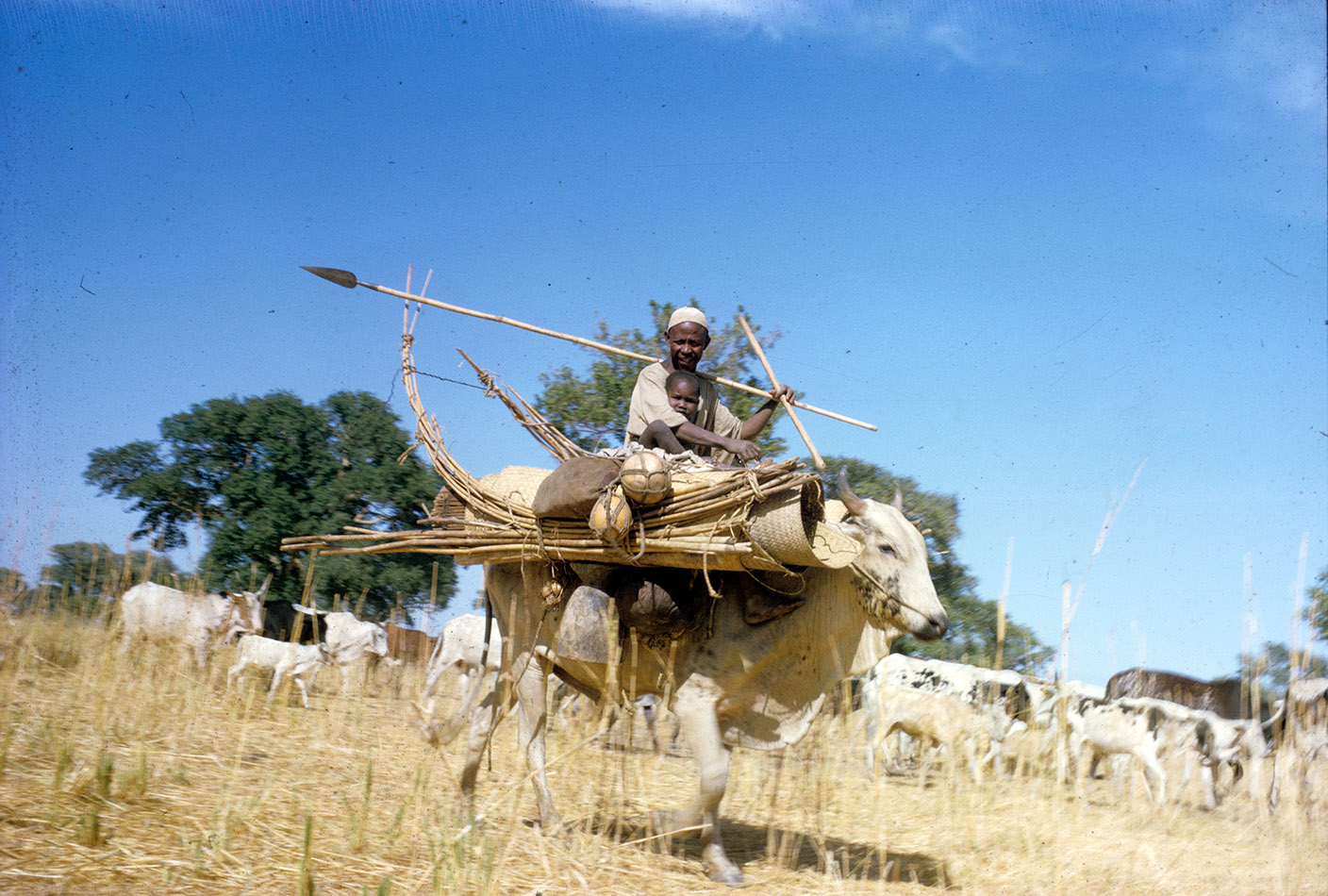I saw something a long-time ago presented in the findings of Sada Mire that somewhat confused me. In her findings at Dhambalin she says:
Yet this makes no sense at all because the Dhambalin site is pre-historic by Horn standards dating to around 5,000-3,000ybp. Horses seem to have come much later in the Horn similar to the camel and would not have been among the animals herded by the earliest pastoralists of the Horn. The original livestock of our ancestors were cattle, goats sheep and donkeys with shepherd/hunting dogs in tow. So how could these Cushitic pastoralists have been mounting horses? Well, if the depictions are not the people who made them just being fanciful then I think the answer is the following:
You see the Baggara folk of Chad and Sudan who actually seem very heavily influenced by Cushites and even use the same domed mat-tents of our ancestors are known for often riding oxen over horses or camels which is so peculiar to outsiders that it's where their name comes from. Baggara = Baqara/بقرة in Arabic which, as many of you likely know, means "cow". Interesting I'm sure but you maybe thinking "So what?" but here's the thing; there is another group of heavily Cushitic influenced people who actually got their pastoralism entirely from Cushites who were known for the same peculiar practice:


Long before horses became the premier riding animals, oxen had filled this need.14 At least 150 years previously there were Khoikhoi riders on cattle on the south coast, and on the lower Orange River by 1661. From them, the Xhosa had acquired riding skills by 1686. - source
As you can see in the depiction above and the quote, the Khoikhoi of South Africa whom we know got their nomadic pastoralist way of life from South-Cushitic pastoralists also practiced cattle riding before horses were ever introduced to them. It might be a stretch but I think the pre-historic rock-art in Somalia which I've heard on occasions other than Dhambalin has even more depictions of people mounting what Sada Mire keeps assuming are "horses" is in fact depicting people riding cattle (most likely oxen like with the Baggara and Khoikhoi).
It's honestly quite cool if true. That our ancestors might have been practicing mounted archery before it was even a thing on the homeland of horse-riding which is the steppes where, if I'm not mistaken, mounted archery only really developed as late as the Iron Age.
One of the hunting scenes depicts two hunters together, one standing and another hunter sitting on an animal, perhaps a horse, and holding a bow and arrow in position to hit antelopes surrounding him Horses are still found/kept in Somaliland.
Yet this makes no sense at all because the Dhambalin site is pre-historic by Horn standards dating to around 5,000-3,000ybp. Horses seem to have come much later in the Horn similar to the camel and would not have been among the animals herded by the earliest pastoralists of the Horn. The original livestock of our ancestors were cattle, goats sheep and donkeys with shepherd/hunting dogs in tow. So how could these Cushitic pastoralists have been mounting horses? Well, if the depictions are not the people who made them just being fanciful then I think the answer is the following:
You see the Baggara folk of Chad and Sudan who actually seem very heavily influenced by Cushites and even use the same domed mat-tents of our ancestors are known for often riding oxen over horses or camels which is so peculiar to outsiders that it's where their name comes from. Baggara = Baqara/بقرة in Arabic which, as many of you likely know, means "cow". Interesting I'm sure but you maybe thinking "So what?" but here's the thing; there is another group of heavily Cushitic influenced people who actually got their pastoralism entirely from Cushites who were known for the same peculiar practice:


Long before horses became the premier riding animals, oxen had filled this need.14 At least 150 years previously there were Khoikhoi riders on cattle on the south coast, and on the lower Orange River by 1661. From them, the Xhosa had acquired riding skills by 1686. - source
As you can see in the depiction above and the quote, the Khoikhoi of South Africa whom we know got their nomadic pastoralist way of life from South-Cushitic pastoralists also practiced cattle riding before horses were ever introduced to them. It might be a stretch but I think the pre-historic rock-art in Somalia which I've heard on occasions other than Dhambalin has even more depictions of people mounting what Sada Mire keeps assuming are "horses" is in fact depicting people riding cattle (most likely oxen like with the Baggara and Khoikhoi).
It's honestly quite cool if true. That our ancestors might have been practicing mounted archery before it was even a thing on the homeland of horse-riding which is the steppes where, if I'm not mistaken, mounted archery only really developed as late as the Iron Age.




